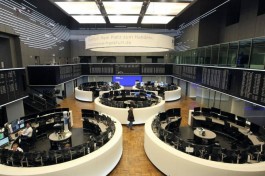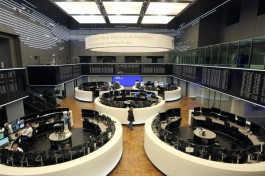A senior Federal Reserve official said the U.S. central bank should gradually return to cutting interest rates, after a larger-than-usual half-point cut earlier this month.
St. Louis Federal Reserve President Alberto Musallam said the U.S. economy could react very strongly to easy financial conditions, stimulating demand and prolonging the central bank's mission to beat inflation to 2%.
“For me, it’s about easing restrictions at this point. It’s about gradually making policy less restrictive,” Musalem told the Financial Times, adding that he was among officials who made several cuts this year to forecasts issued earlier this month.
The comments from Musalem, who became president of the St. Louis Federal Reserve in April and will be a voting member of the Federal Open Market Committee next year, came less than two weeks after the U.S. Federal Reserve cut interest rates by half a percentage point, abandoning a more traditional quarter-point cut to begin its first easing cycle since the COVID-19 pandemic struck in early 2020.
The big cut left interest rates in a range of 4.75% to 5% — a move that Fed Chairman Jerome Powell said was aimed at keeping the world's largest economy strong and avoiding a weak labor market now that inflation has eased.
On Friday, September 27, the Fed's preferred measure of inflation fell more than expected to an annual rate of 2.2% in August.
The job market has slowed down but
Musallam, who supported the cut in September, acknowledged that the labor market has slowed in recent months, but remained positive about the outlook given the low rate of layoffs and the underlying strength of the economy.
He said business was in good shape with overall activity strong, adding that mass layoffs did not appear imminent. However, he acknowledged that the Fed faces risks that could require it to cut interest rates more quickly.
“I am attuned to the fact that the economy may weaken more than I currently anticipate [and] the labor market may weaken more than I currently anticipate,” he said. “If that is the case, then a faster pace of rate cuts may be appropriate.”
This echoes comments from Governor Christopher Waller last week, who said he would be more willing to act aggressively to cut interest rates if data weakened more quickly.
Musalim said the risks of the economy weakening or accelerating too quickly were now balanced, and that the next interest rate decision would depend on the data at that time.
Majority in favor of a half-point cut before the end of 2024
The Fed’s latest dot plot showed most officials expect interest rates to be cut by another half a percentage point over the remaining two meetings of the year. The next meeting is on Nov. 6, the day after the U.S. presidential election.
However, officials had a wide range of views, with two suggesting the Fed should hold off on further cuts, while seven others expected just another quarter-point cut this year.
Policymakers also expect the federal funds rate to fall another percentage point in 2025, ending the year between 3.25% and 3.5%. By the end of 2026, the rate is expected to fall to just below 3%.
Musallam dismissed the idea that the half-point move in September was a compensatory cut because the Fed was too slow to ease monetary policy, saying inflation had fallen much faster than he had expected.
He said: It was appropriate that we start with a strong and clear message to the economy that we are starting from a position of strength.




































